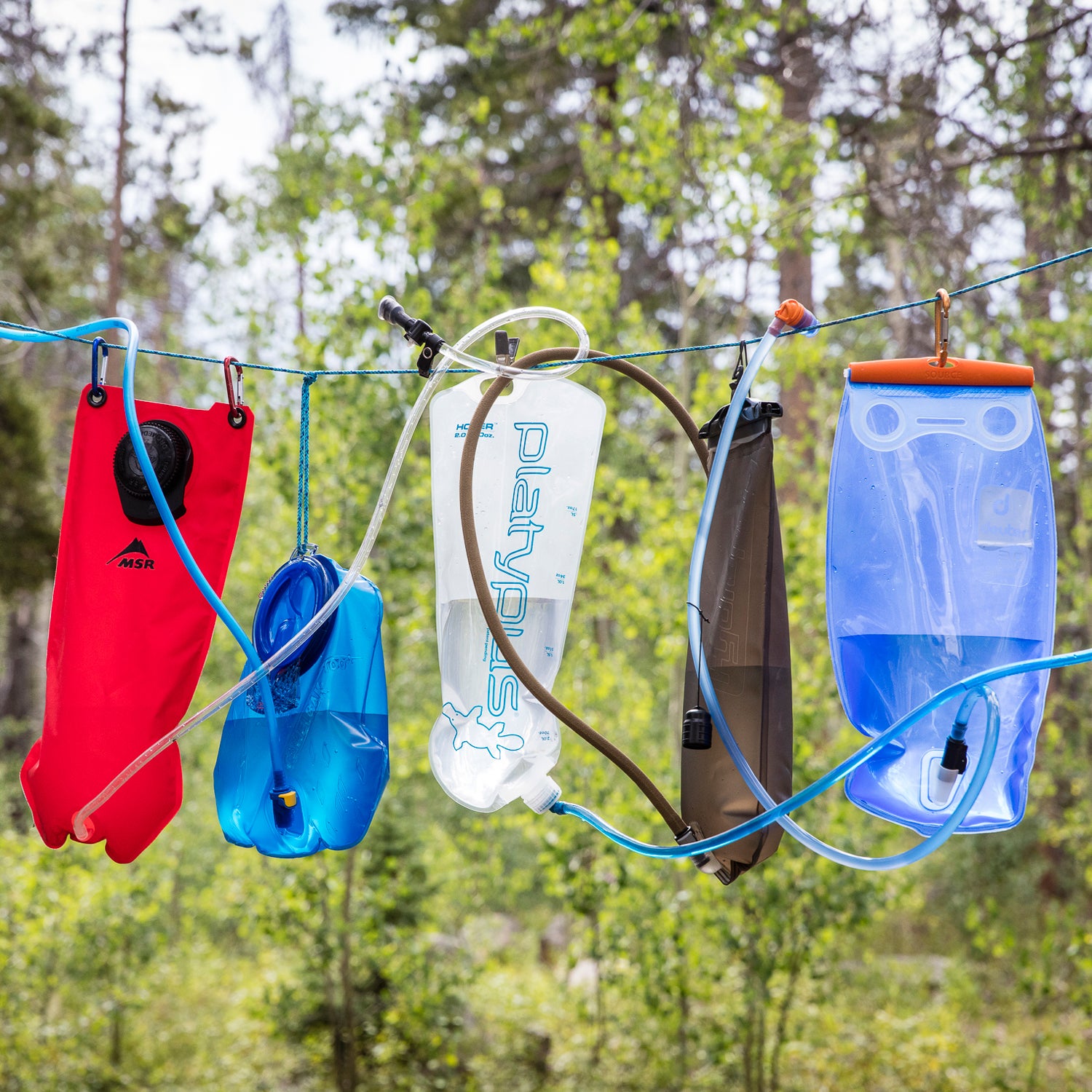A few months ago, as I was prepping for a through-ride on the Arizona Trail, I became obsessed with┬áhydration bladders. No, the┬álittle plastic bags that hold your performance drink arenÔÇÖt interesting or sexy. But I'd be riding in the desert, with long┬ástretches between water. When it comes to staying hydratedÔÇöand aliveÔÇöin the heat, there's no more critical piece of gear. That, combined┬áwith the fact that a few of my three-year-old hydration bags had begun leaking, giving me visions of┬ágetting stuck┬á50 miles out with a popped, empty reservoir, had me researching the best bladders on the market.┬á
I ordered up a slew of the most popular models and began beating on them to see which ones were worthy. Since then, IÔÇÖve carried them all for hundreds of miles, dropped them 20 feet onto pavement (thinking one or two might popÔÇönone did), froze┬áthem, and generally tried to get them to fail. The upshot:┬áthey are all largely reliable, but there are some that are more user-friendly than others. Oh, and yes, they are all BPA-free.
CamelBak Antidote Reservoir (2L, $35; 3L, $38)
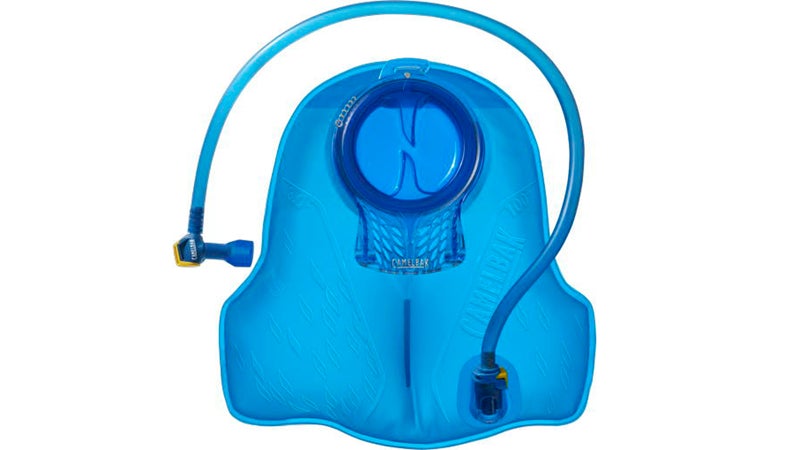
It should come as no surprise that, as the company that started the water-on-the-back revolution in 1988, CamelBak still has arguably the . The wide-mouth opening is large enough to accommodate ice (as is the case with┬ámost bags in this test), but itÔÇÖs far easier to fill,┬áthanks to the plastic handle. The tube is detachable so you can easily remove the bladder and refill it without unthreading, and the bite valve is high-flow,┬áwith a simple, clear shut-off gauge. ThereÔÇÖs even an interior partition that keeps water from sloshing around. I┬álike the lumbar design, which puts weight low and centered, but CamelBak also offers the Antidote┬áin horizontal orientations for packs that it wonÔÇÖt fit the unique shape.┬á
Bottom Line: Tried and true, IÔÇÖve used dozens of CamelBaks over the years and never had an issue with them.┬á
Deuter Streamer (2L, $32; 3L, $34)
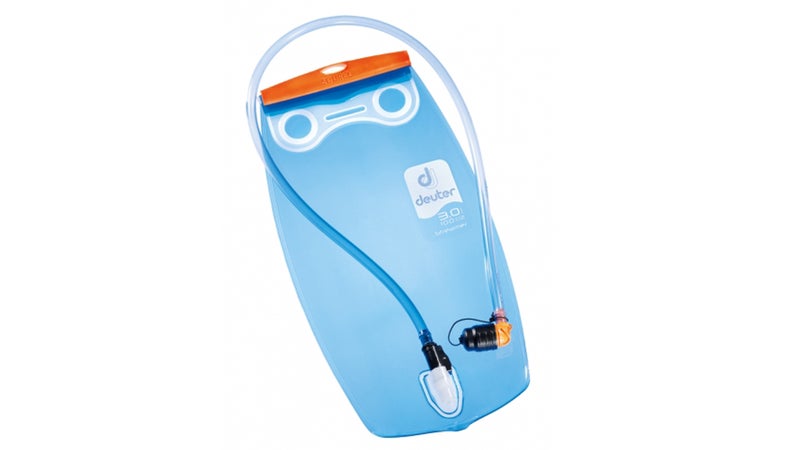
The German company takes the and improves on its limitationsÔÇönamely the difficulty of fillingÔÇöwith two large pinch holes at the top that both make it easier to hold the plastic envelope and simultaneously force the mouth of the bag open. If that were the end of the story, this would have been my favorite bladder. However, the bite valve, which connects to a detachable tube, proved both tricky to open and close because the actual mouthpiece has to spin to accomplish the taskÔÇöit was particularly hard to close with one hand while riding. In the open position, if the mouthpiece touched my leg or anything while pedaling, some┬áwater would escape. It wasnÔÇÖt so much a worry over losing liquid as the simple annoyance of a wet thigh, as well as the frustration of having to open and close the valve every time I wanted to use it. And the supplemental mouthpiece cover, which was clunky, found its home in the trash bin almost immediately.
Bottom Line: A quality, taste-free bag let down by a finicky bite valve.
Hydrapak First Wave (2L $37;3L, $39)
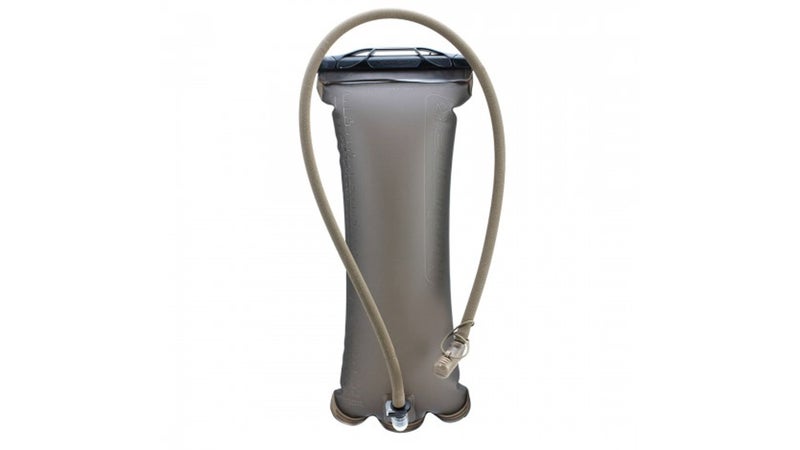
This heavy duty bagÔÇöarmy green,┬áapparently to show off its military-grade credÔÇöwas, like the Osprey reservoir that the company designs, highly reliable but not as user friendly as the CamelBak, due┬áto the fold-over closure. ItÔÇÖs even tougher here because, unlike the Osprey or Deuter, thereÔÇÖs no convenient handle for muscling the bag while filling, meaning you have to pinch the thin plastic between thumb and pointer then hold three liters of weight. Again, itÔÇÖs not impossible, but filling and closing once or twice ended in a dousing due to the combo of weight and the water. ThereÔÇÖs a super-sound twist closure on the bite valve, but itÔÇÖs stiff and not easy┬áto operate with one hand. As with the Deuter, I ditched the dust-cap on the mouthpiece almost immediately. On the plus side, the bag design is fully reversible, making it the easiest to clean of any we tested, and the insulated tube kept in-line water colder┬á(and prevented┬áfreezing) longer than the plastic of the other bags.
Bottom Line: Super durable and extremely pliable bag material. Excellent if you live in a warm, humid clime where cleaning is imperative, but a bit finicky to fill.
MSR Hydromedary (2L, $35; 2.5L, $37; 3L, $39)
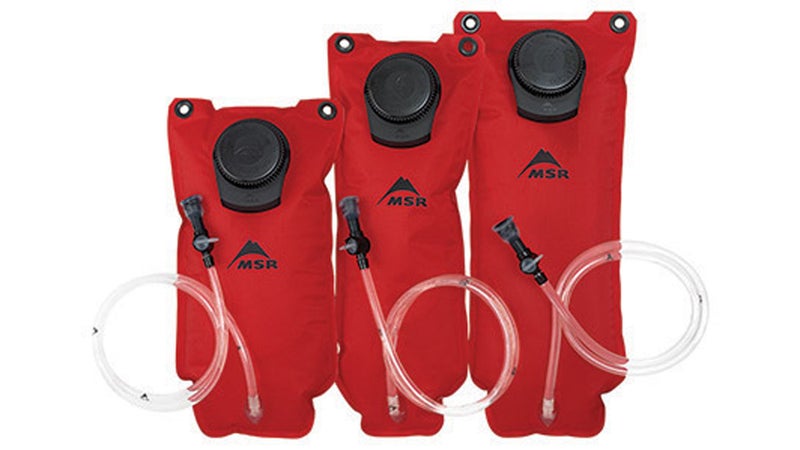
Having used MSRÔÇÖs Dromedary bags for years in the backcountry, with nary a drop leaked, I wanted to like the Hydromedary. And it worked well enough, with a fill hole akin to the CamelBak┬áthat was easy to top up,┬áthough not quite as wide, an excellent shut-off valve at the mouthpiece, and super toughness and pliability, thanks to its┬á200-denier nylon exterior. The dual grommet design at the top was also nice for hanging at camp, though it didnÔÇÖt play well with most bag designs I tried, which call for a center clip to keep the bladder upright. Really, the only other thing I wished for was that the tube was interchangeable with other Dromedarys, so I could carry multiple bladders, of various sizes, in the same pack. This is especially useful for long, hot endurance rides. The Hoser, below, has this functionality.┬áMy final gripe: the opaque exterior made cleaning and drying a bit tougher. ┬á┬á
Bottom Line: This sturdy model wonÔÇÖt let you down in the field. But it could be a real homerun with a detachable, interchangeable tube system like the Hoser.
Osprey Hydraulics Reservoir (2L, $34; 3L, $36)
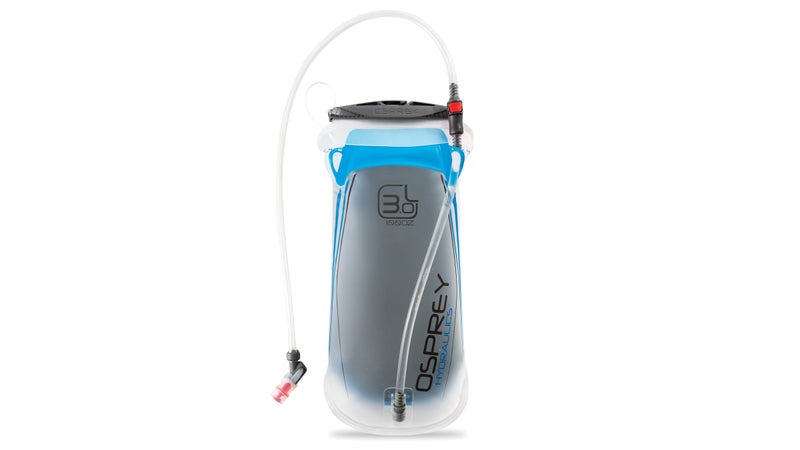
This is the from Osprey since it launched into the┬áhydration market. Made by Hydrapak, itÔÇÖs an excellent bladder, with a detachable tube and a magnetic mouthpiece that stows easily on the companyÔÇÖs packs, a feature that Osprey pioneered and which I still think is one of the coolest, most invaluable hydration features our there. For the first time, however, Osprey has gone to a dry-bag, fold-over style closure, which makes cleaning easier, but filling more difficult. Of the comparable dry-bag models, OspreyÔÇÖs is easiest,┬ágiven the plastic handle on front, but I still sometimes found it tough to keep the bag open without spilling water all over. ItÔÇÖs possible, just not nearly as quick or efficient as with the CamelBak. Also, as noted on the HydraPak, the on-off function on the bite valve works beautifully but is stiff and a sometimes hard to operate with one hand.
Bottom Line: This would have been my favorite model but for the dry-bag closure, which I personally found tricky to fill. Still, the simplicity of the magnetic bite valve puts this neck-and-neck with the CamelBak.
Platypus Hoser (1L, $23; 1.8L, $24; 2L, $25; 3L,26)
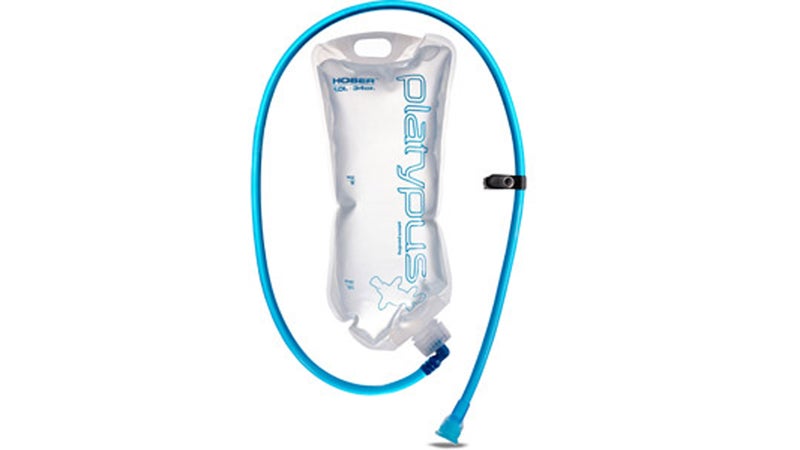
One of the most interesting,┬áand simple,┬ásetups, combines PlatypusÔÇÖ time-tested pliable water bottle design with an interchangeable tube. That means that not only does this hydration bag work┬ágreat on the back, but you can switch it out with the companyÔÇÖs 0.5, 1, 2, 4, and 6L Bottles and Tanks, for the ultimate hauling versatility. Just screw off the tube and exchange lids with a full bag once youÔÇÖve finished with the first. The downfall:┬áthe tube and bag are not easy to clean (though the transparency helps) and the mouthpiece is pretty simple and has no on-off valve. And though Platypus includes a clip for attaching the head to your pack strap, itÔÇÖs not that easy to operate while riding. Still, the ability to change one bag out for another is a big plus on long-distance, backcountry rides.
Bottom Line: This is a simple bag without the bells and whistles of some of the other systems (PlatypusÔÇÖ Big Zip line is quite competitive with Hydrapak and Deuter), but what it lacks in features it makes up for in versatility. Perfect for long-distance, backcountry endeavors where youÔÇÖre likely to carry multiple reservoirs.┬á


